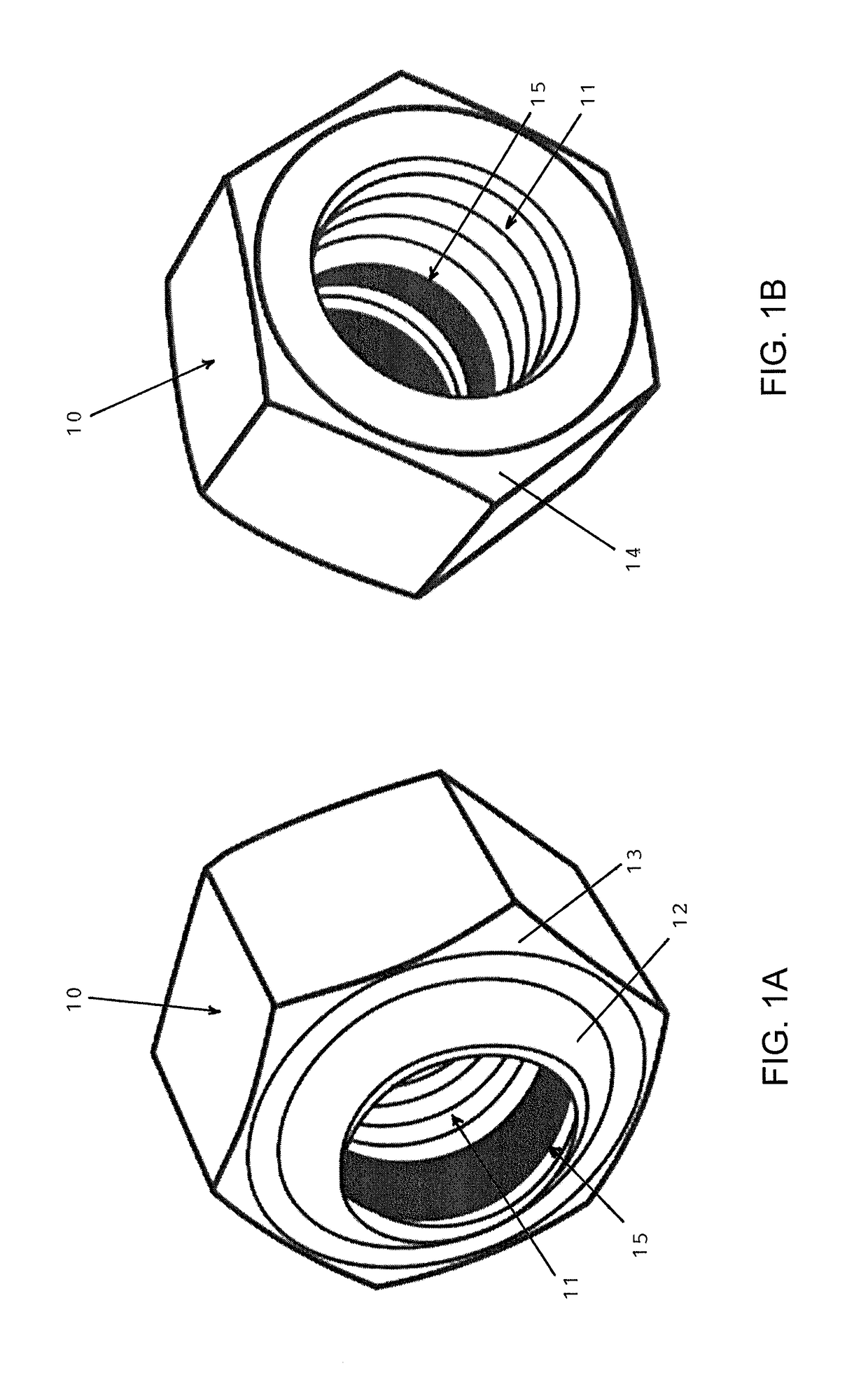One-piece self-locking nut
a self-locking, threaded technology, applied in the direction of threaded fasteners, screws, fastening means, etc., can solve the problems of occupying more time and material, and the locknut may still be subject to loosening, so as to improve the strength of the nut, the effect of easy and less expensive manufacturing, and convenient manufacturing
- Summary
- Abstract
- Description
- Claims
- Application Information
AI Technical Summary
Benefits of technology
Problems solved by technology
Method used
Image
Examples
Embodiment Construction
[0019]In the following detailed description of the invention, certain preferred embodiments are illustrated providing certain specific details of their implementation. However, it will be recognized by one skilled in the art that many other variations and modifications may be made given the disclosed principles of the invention.
[0020]FIG. 1A is a front perspective view of a preferred embodiment of the one-piece, self-locking nut in accordance with the represent invention, and FIG. 1B is a rear perspective view thereof. The one-piece, self-locking nut has a nut body 10 with internal threading 11 for threading on a threaded shaft of a fastener bolt, and is integrally formed with external, crush-locking lips 12 provided on a forward contact face 13 of the nut body 10. The forward contact face 13 of the nut is typically beveled or provided with a slight convex curvature, while the rear face 14 of the nut is typically planar. The dark area 15 indicates a space for deformation of the crus...
PUM
 Login to View More
Login to View More Abstract
Description
Claims
Application Information
 Login to View More
Login to View More - R&D
- Intellectual Property
- Life Sciences
- Materials
- Tech Scout
- Unparalleled Data Quality
- Higher Quality Content
- 60% Fewer Hallucinations
Browse by: Latest US Patents, China's latest patents, Technical Efficacy Thesaurus, Application Domain, Technology Topic, Popular Technical Reports.
© 2025 PatSnap. All rights reserved.Legal|Privacy policy|Modern Slavery Act Transparency Statement|Sitemap|About US| Contact US: help@patsnap.com



